INTRODUCTION
Vigyan Ashram has been working on composting for a long time in its efforts to provide better waste management alternatives compared to conventional ones. Vigyan Ashram has developed many prototypes of composters for single households as well as large housing societies.
Municipal Council of Rajgurunagar, Pune is working on the scientific collection and disposal of urban waste under Swachh Bharat Mission. Dr.Manik Bichkar is a social worker and she is actively involved with the Municipal Council of Rajgurunagar for waste management. She introduced the municipal council to Vigyan Ashram, Pabal for the same.
Vigyan Ashram has been working in this field and has developed various waste management technologies and composters. Municipal Council, Rajgurunagar and Vigyan Ashram, Pabal had a joint meeting. It was decided to conduct experiments on wet biodegradable waste.
The composting works in two stages. In the first stage, the wet waste is mixed with a microbial culture developed by BARC and in the second stage, the mixture is stored or stacked for a time period of approximately 4 weeks to turn into compost.
The ‘Akshay Home Composter’ designed for single households acts as a mixer as well as a stacking device since the amount of wet waste produced per day in a single household is low. In the case of society composters, the amount of wet waste produced is so high that mixing and stacking can’t be done in the same device.
In order to offer a solution to this problem Vigyan Ashram is developing a stacking device that can store the wet waste + microbial culture mixture till complete composting.
These experiments were performed on kitchen waste collected from 50 households. Then We made compost at Rajgurunagar using Society Compost and experimented with BARC culture.
EMPATHY
When we went to Rajgurunagar then Bichker Madam told us that there was lot of wet garbage like kitchen waste and we want to dispose of it.
Mam told that, they did not have any idea that to dispose the waste as quickly as possible.
We saw the composter, the wheels on both sides were bent.
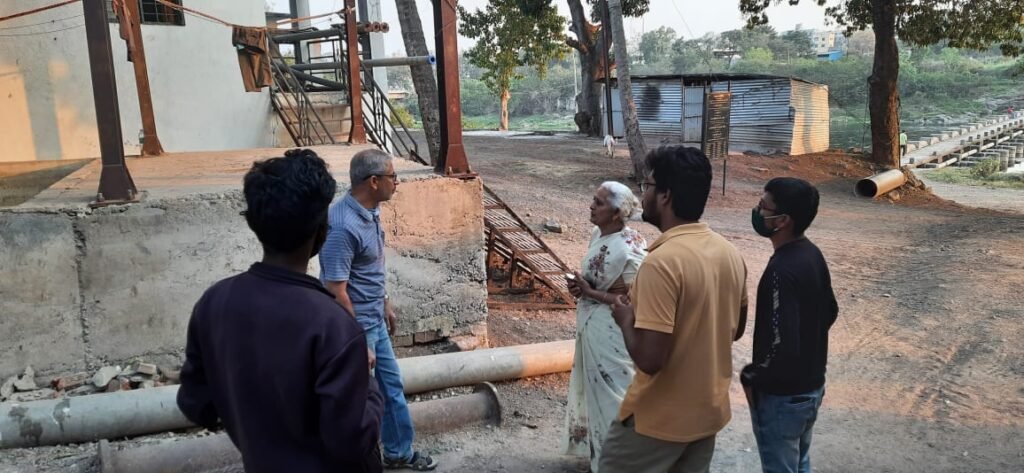
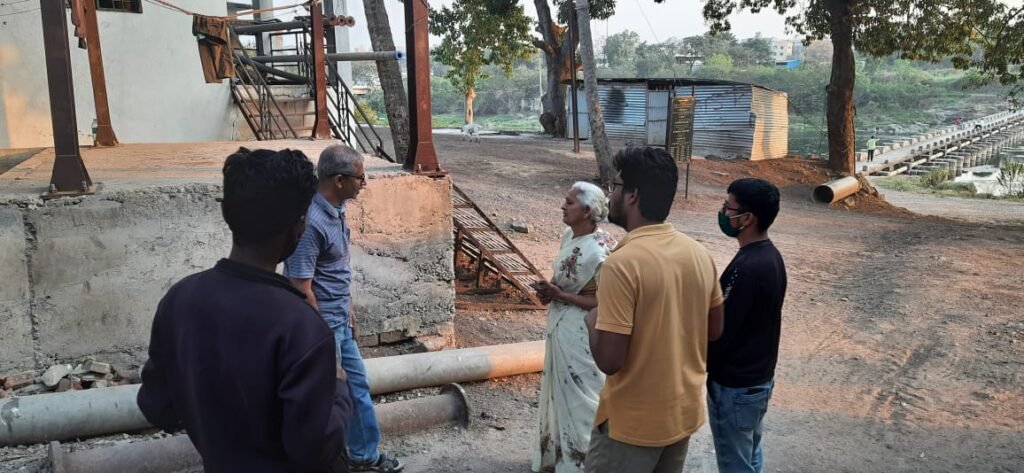
PROBLEM
We were work on old composter there were a lot of problems.
The wheels on both sides of the composter were bend. Because it was used before and it was overloaded.
The lock at his door were has open automatics and the doors was knocking on the body of composter.
After that we starting welding, we repair the bend from the wheel and weld some rod between the gap of the wheel.
OBJECTIVES
1.To refurbish the old stacking rack and make it function at full capacity.
2.To implement this unit on site.
3.To take trials and monitoring the system regularly.
4.To compile and analyze the field data.
5.To propose appropriate solution for biodegradable wet waste.
SOLUTION
We straightened the wheel and welded it with small pieces of rod so that it would not bend again.
The door only opened on one side so we had to change it because if the door opened after turning it would get stuck in the frame body of the stacking rack.
Then we made a change that would open its doors on both sides and it was a success.
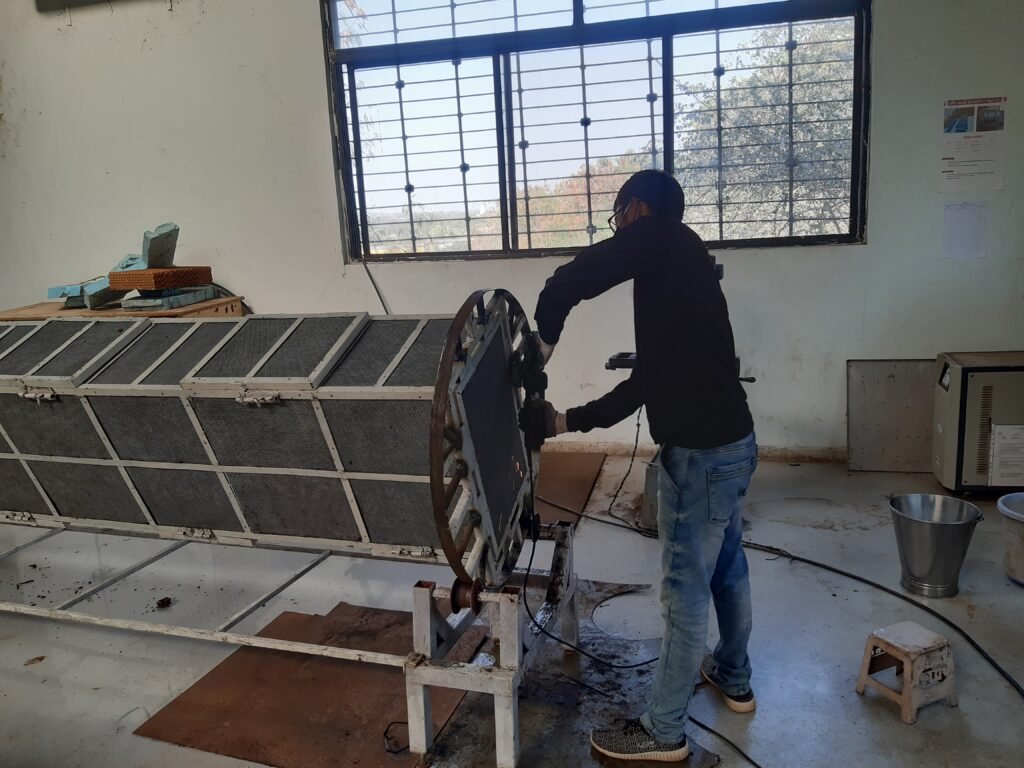
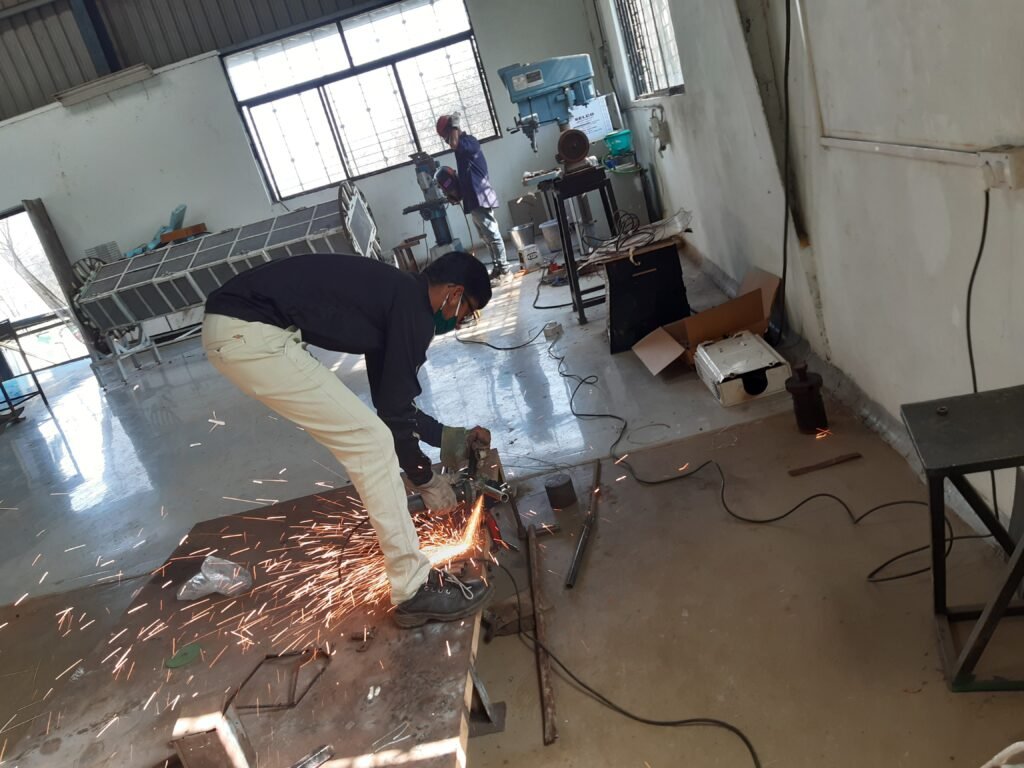
After we finished the door we did the welding and after welding we did the grinding and polishing.
Then we weighed 400 kg of compost for trial.
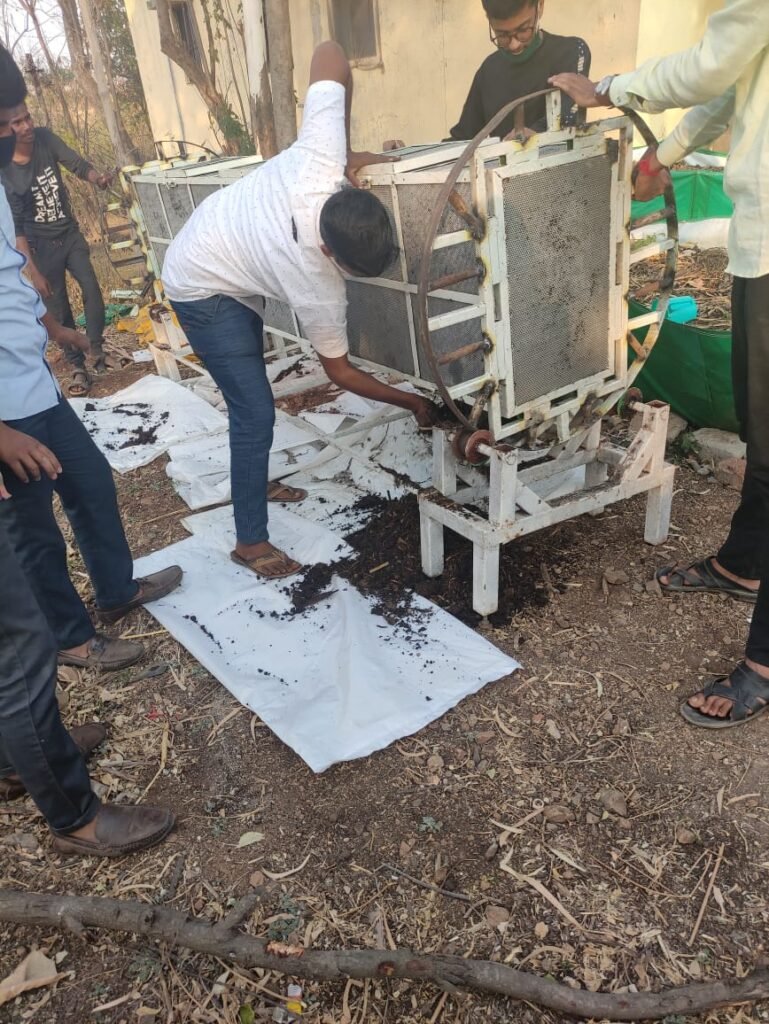
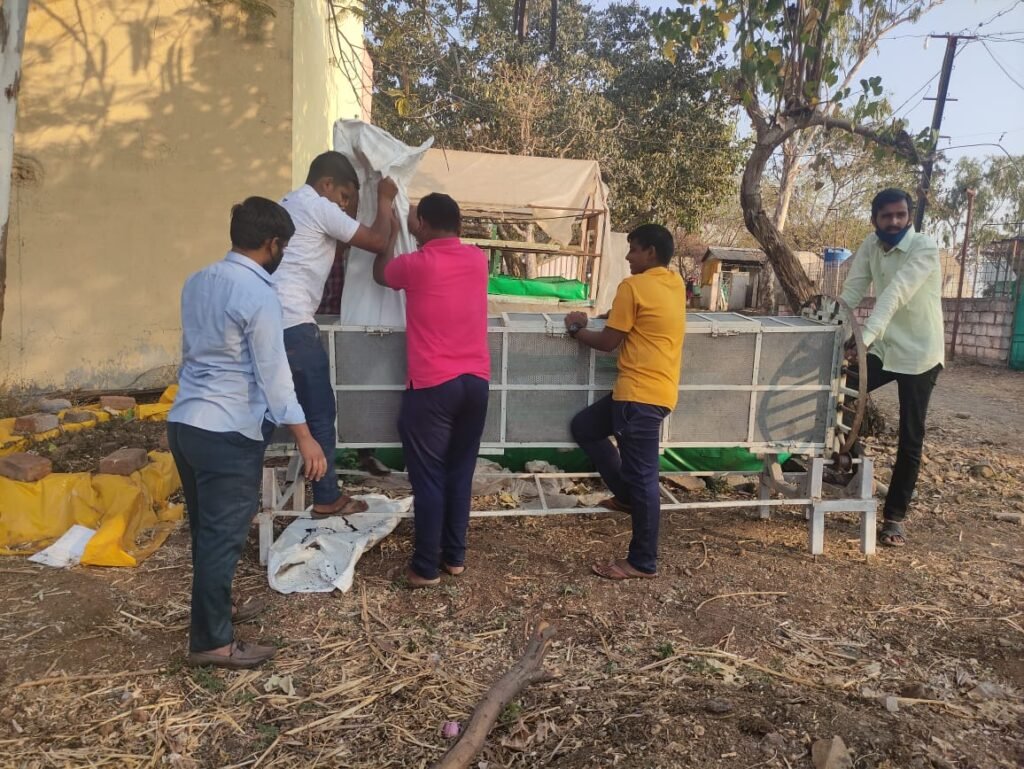
And the Amol composter passed the trial test successfully.
After the trial, the composter color is white so we polished it and gave it a red oxide color to prevent it from rusting.
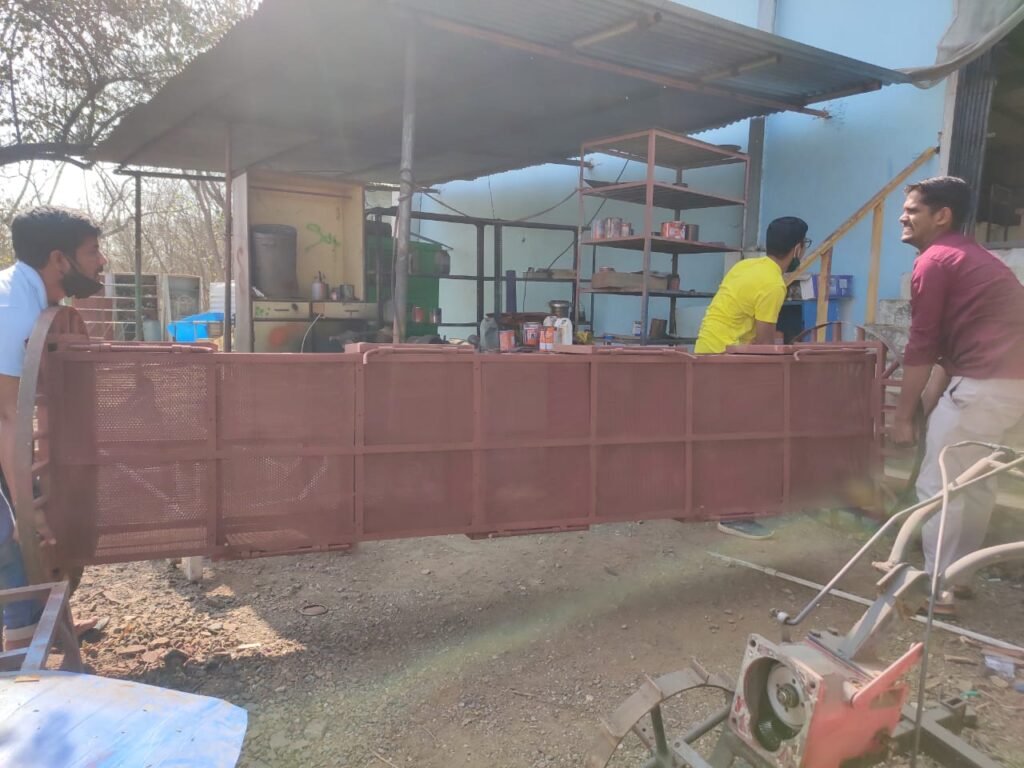
Then shifted it again from Vigyan Ashram Pabal to Rajgurunagar.
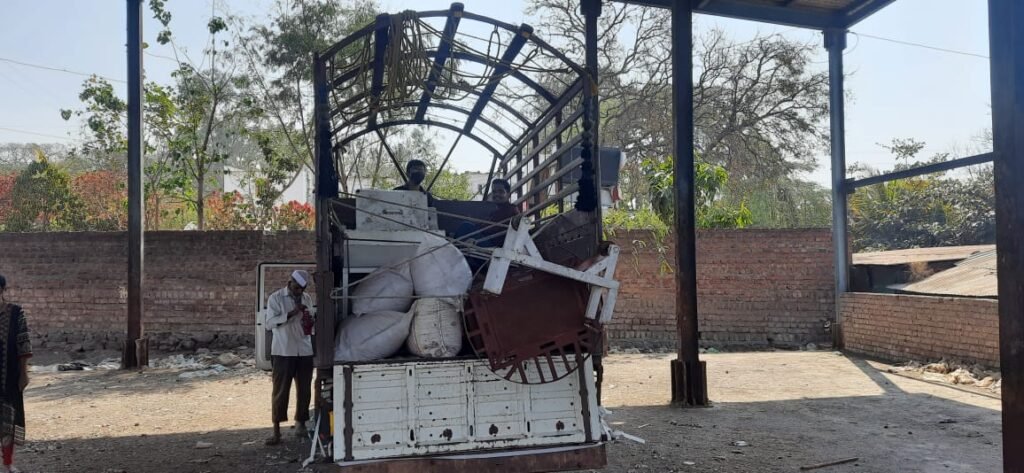
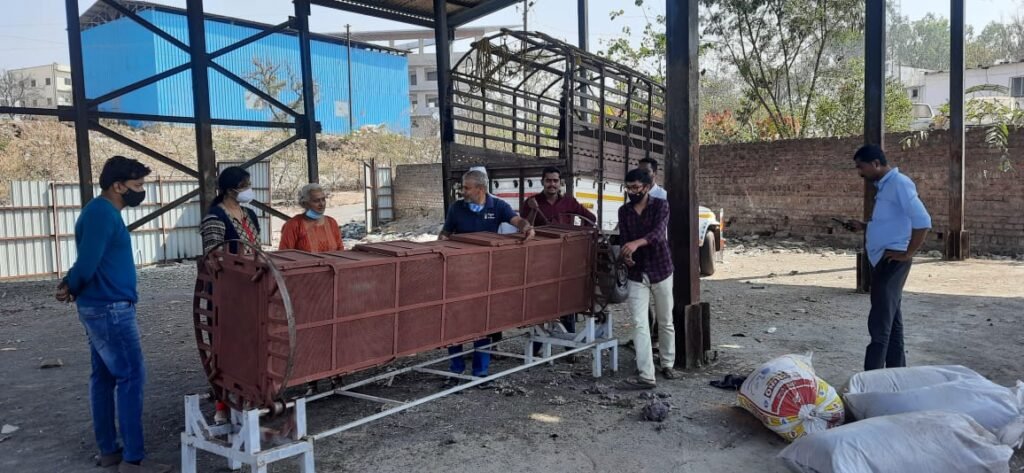
DATA SHEET


FOR MORE INFORMATION:-(READ THIS BLOGS)
Society Waste Composter (Hexagonal 120 Liter Tumbler)
Compost Stacking Rack
TAKING TRIALS
26 Feb
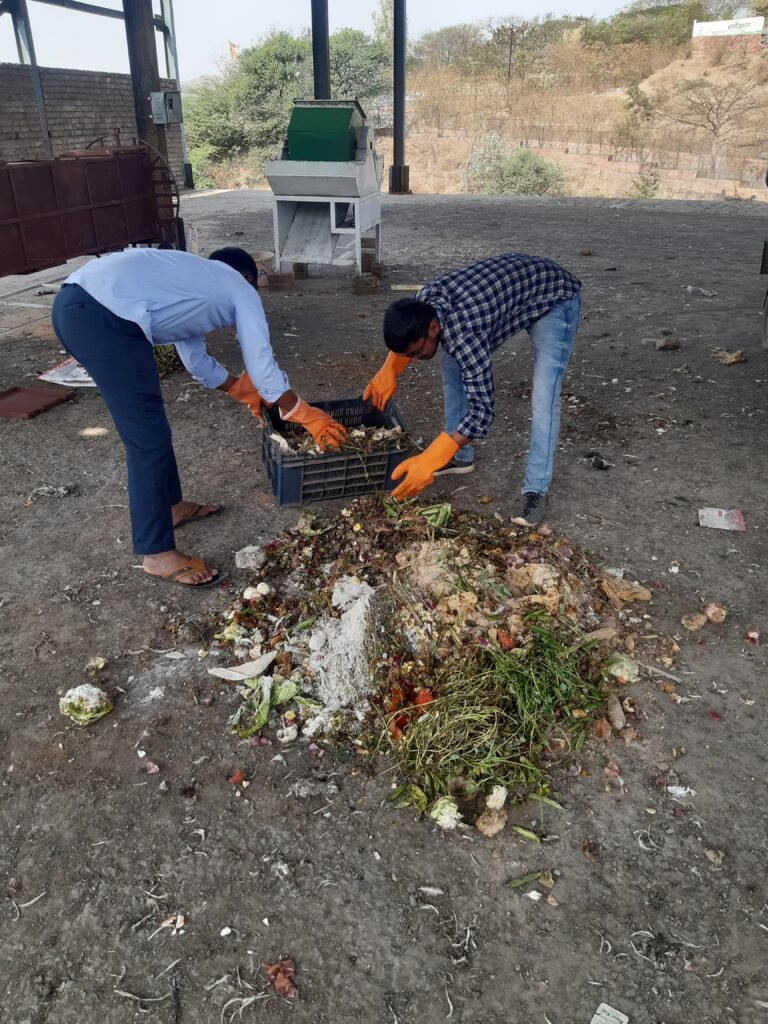
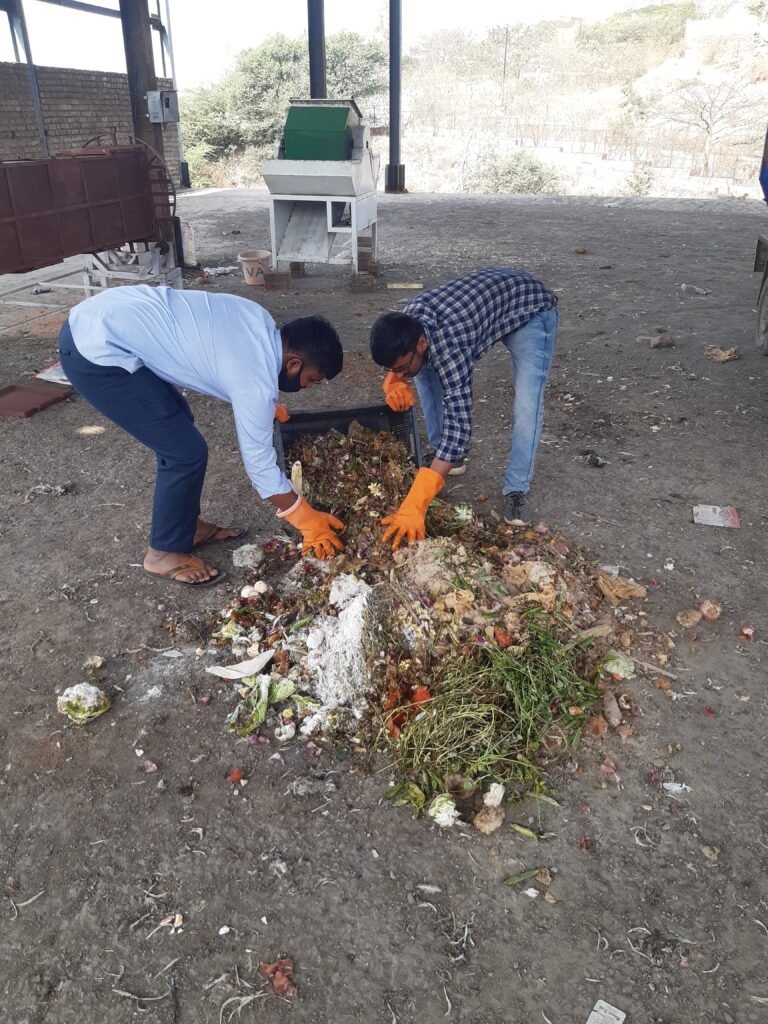
Rack number 3:-
We first collected the waste and weighed it.
We mixed 8 kg of wood sawdust and 1 liter of culture in 24 kg of wet waste. It weighed 33 kg and we put it in the first rack.
Then we did the same process after two days.
Then third time we took only 45 kg of wet waste and 1 liter of culture and dumped it in 3rd rack in the composter.
28 Feb
Observation:- (For rack 1,2 and 3)
We went to Rajgurunagar for taking the readings and took rack number one, two and three like depth, temperature and sample.
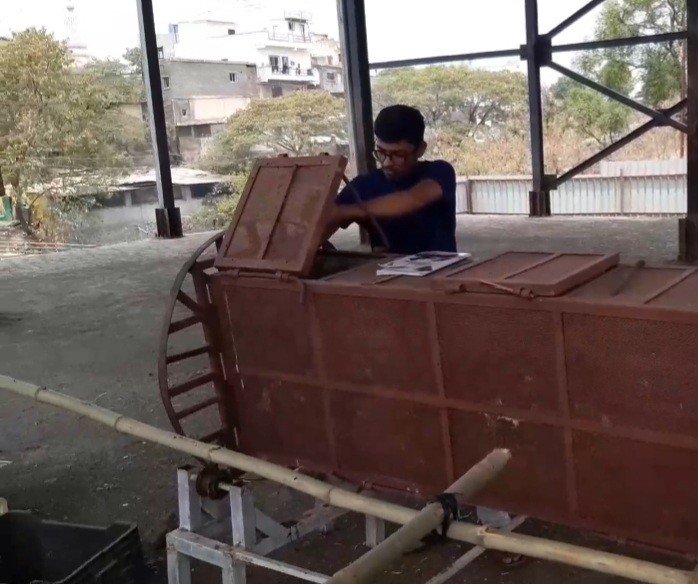

We observe the rack number 1 is leached free, Flies free with no any smell.
Then rack number 2 is same as rack no 1.
But the rack number 3 present the leached, flies and worm because of not use the wood dust for it.
Rack number 4:-
Taking of 8 kg wood dust, 25 kg wet waste and 1 liter culture.
Put it all in mixer for mixing the wet waste with wood dust and it mixed for 15 minutes.
Then the mixed of wet waste filled in rack no 4.
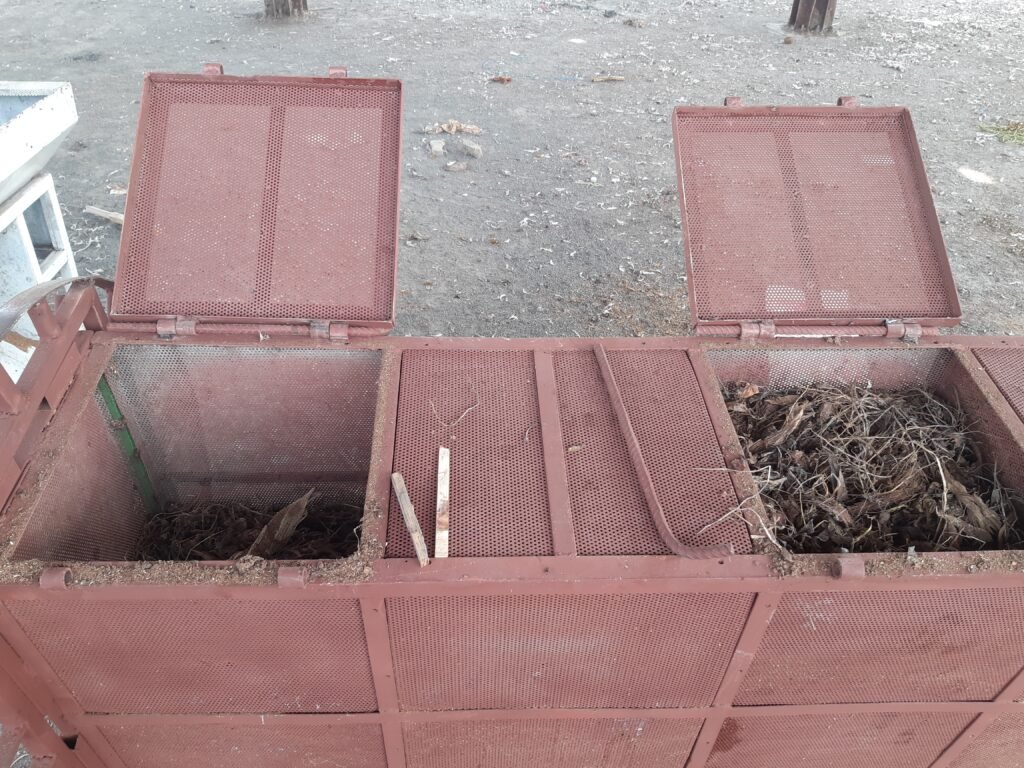
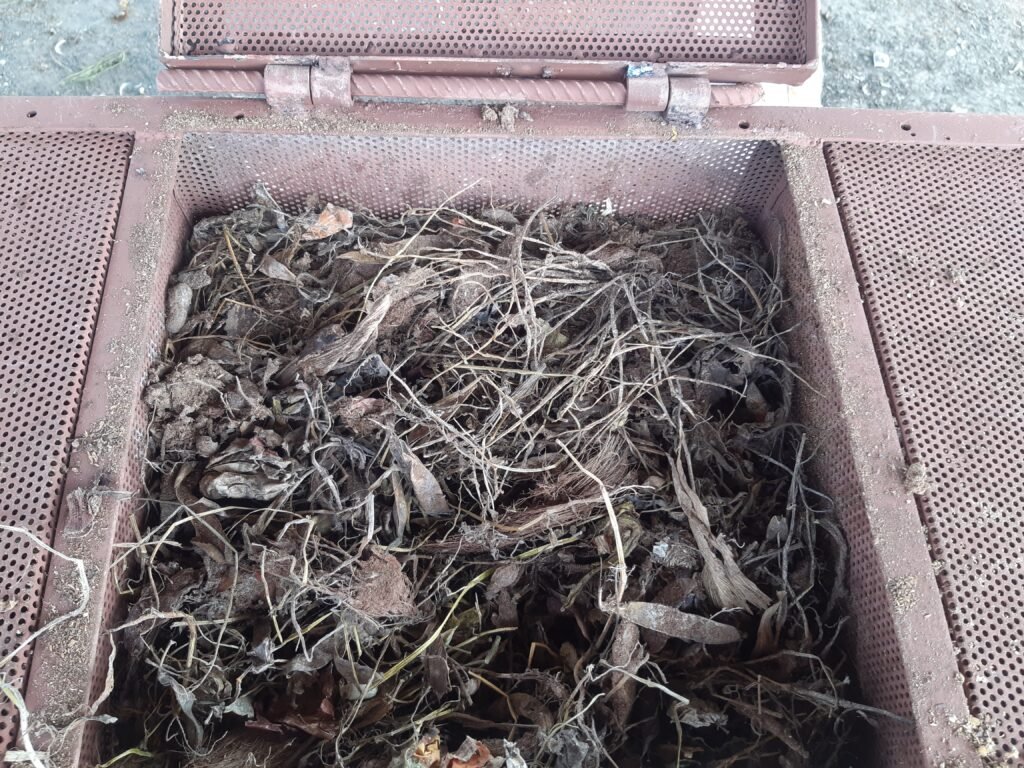
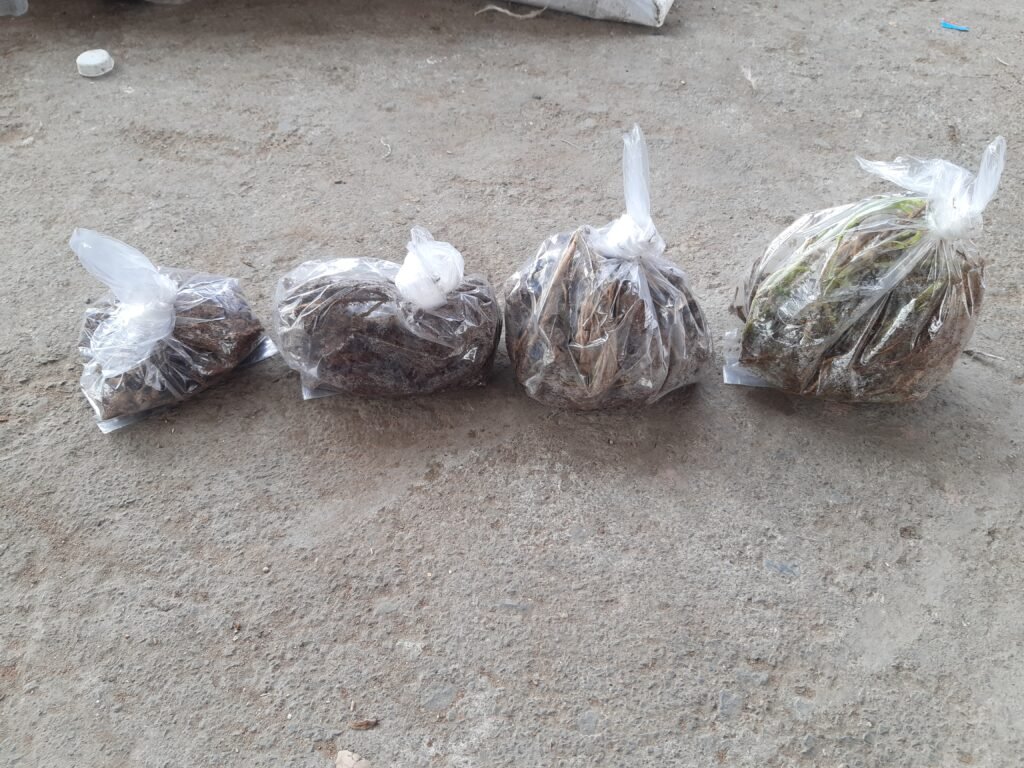
02 Mar
Rack number 5:-
With the help of hand shredder, we crushed the waste and filled it into rack number 5 with one liter of culture.
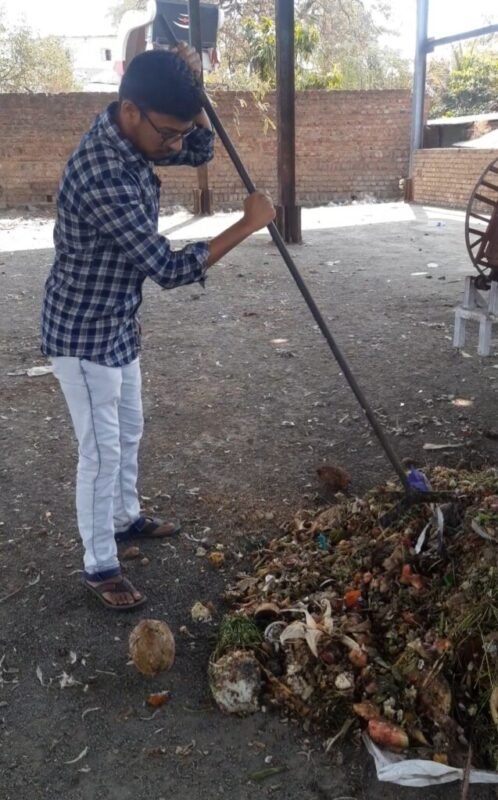
36 kg of wet waste and 3 kg of dry waste were compost from 1st rack.
That means 36+3+1=40 kg.
and also filled rack number 1
40 kg of wet waste and compost is 5 kg 1 liter culture.
40+5+1=46 kg
04 Mar
With the help of hand shredder, we crushed the waste and filled it into rack number 6 with one liter of culture.
For this time we prepare the different structure for rack no 6.
First we put 2 kg of dry compost and filled in bottom of the rack then 44 kg of wet waste then put again 2 kg of dry waste in top and spread the culture in the wet waste.
2+44+2+1=49 kg.
On the same day we noticed that the odor was coming out from the rack number 5 and 1, then we decided that the 1 liter culture were spread on it.
07 Mar
With the help of hand shredder, we crushed the waste and filled it into rack number 2 and 7 with one liter of culture.
First we put 1.5 kg of dry compost and filled in bottom of the rack then 38 and 40 kg of wet waste then put again 1.5 kg of dry waste in top and spread the culture in the wet waste.
1.5+38+1.5+1=42 kg. (For rack no.2)
1.5+40+1.5+1=44 kg. (For rack no.7)
09 Mar
With the help of hand shredder, we crushed the waste and filled it into rack number 4 with one liter of culture.
First we put 3 kg of dry compost and filled in bottom of the rack then 30 kg of wet waste then put again 3 kg of dry waste in top and spread the culture in the wet waste.
3+30+3+1=37 kg. (For rack no.4)
14 Mar
With the help of hand shredder, we crushed the waste and filled it into rack number 1 and 3 with one liter of culture.
First we put 2 kg of dry compost and filled in bottom of the rack then 41 and 39 kg of wet waste then put again 2 kg of dry waste in top and spread the culture in the wet waste.
2+41+2+1=46 kg. (For rack no.1)
2+39+2+1=44 kg. (For rack no.3)
17 Mar
In Rack no 7:-
First we put 2 kg of dry compost and filled in bottom of the rack then 20 kg of wet waste then spread the culture in it.
2+20+1=23 kg.
19 Mar
We collect wet garbage from 50 houses and each of them we spread culture on the garbage and then we were collecting it in big buckets.
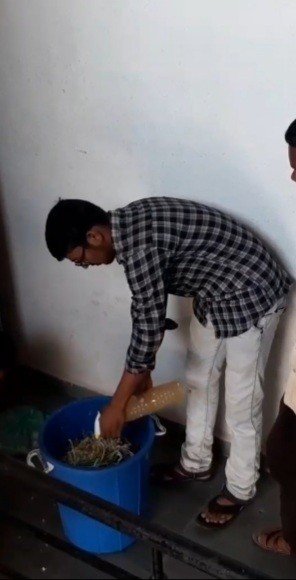
Then we put it in a bag its around 34.5 kg from 50 households.
We took the garbage and went to the composter and put in it the rack no 2 directly.
1.5+34.5+1=37 kg.
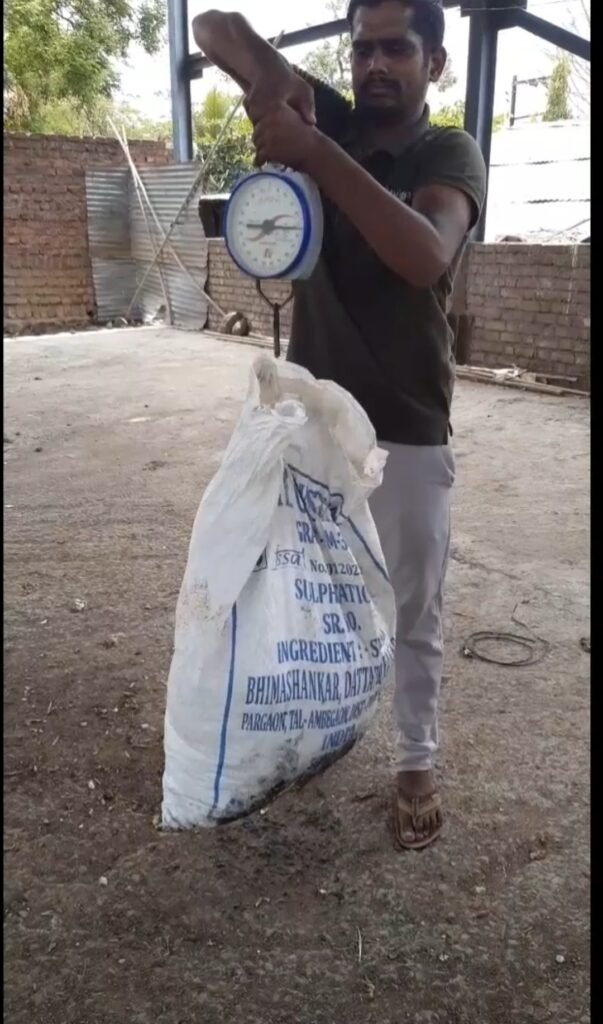
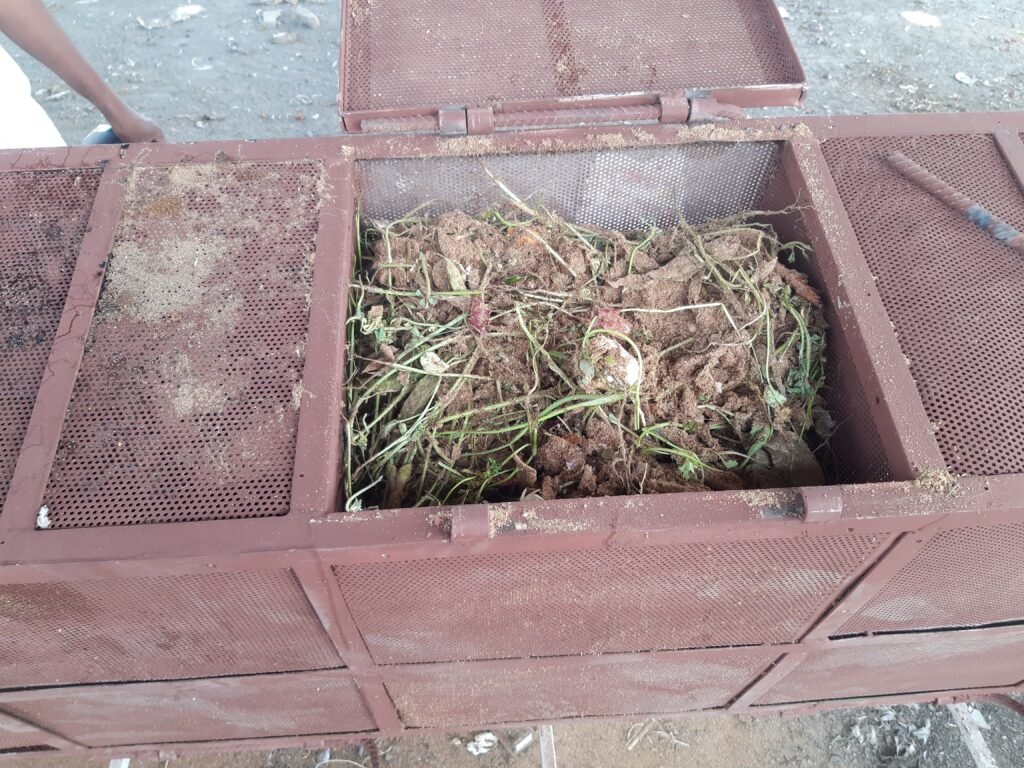
21 Mar
First we put 2 kg of dry compost and filled in bottom of the rack then 35 kg of wet waste then put again 1 kg of dry waste in top.
We already spraying the culture at society households, so its the easy way to carry the wet waste from society to our located area where the compost is fitted.
3+35+1=39 kg.
5 May
From the waste (kitchen waste) we filled in the compost for 15 tests and dumped about 593 kg of wet waste and after 45 days we got only 77 kg of dry compost.
We use half of the compost for the compost wash system which is controlled by Mr. Harshal Mote and uses half a compost used for mixer system which is controlled by Miss. Jyoti More does.
Effect and study Compost tea on growth and yield of cabbage
Optimization for curing of society garbage
Modify the Compost wash system.
10 May
Mahesh and I brought rack stack composter from Rajgurunagar back to Vigyan Ashram, Pabal.
CONCLUSION
I learnt various aspects of product designing while refurbishing the old stacking rack. Design improvement, Load distribution and metal fabrication were some of them. We installed the composter successfully at the site and took trials on it. I learned to collect data and analyze it.
In this experiment it has been proved that composter works well for 50 houses and according to our system wet waste decomposes in 7 days without any fly and smell free.
The compost manure is formed on the 8th day.
I found that composting biodegradable wet waste by bacterial culture is a good solution. Such culture is cheap (50 Rs for 1 liter)
Watch this video on Youtube
In this video you can see how this whole process works and how we work on it.

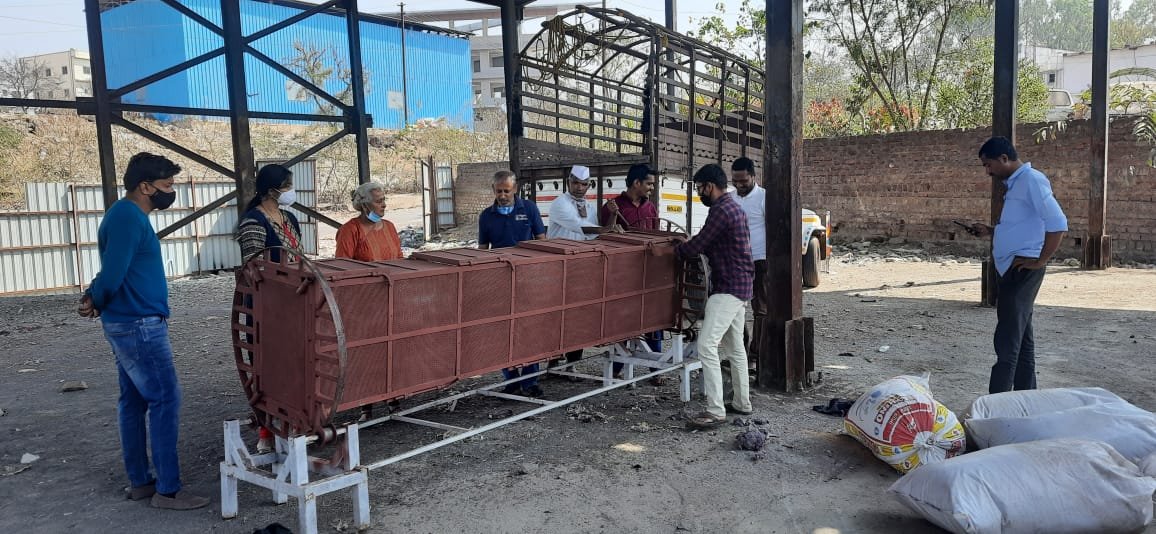


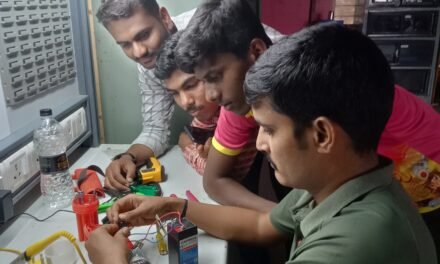
Trackbacks/Pingbacks